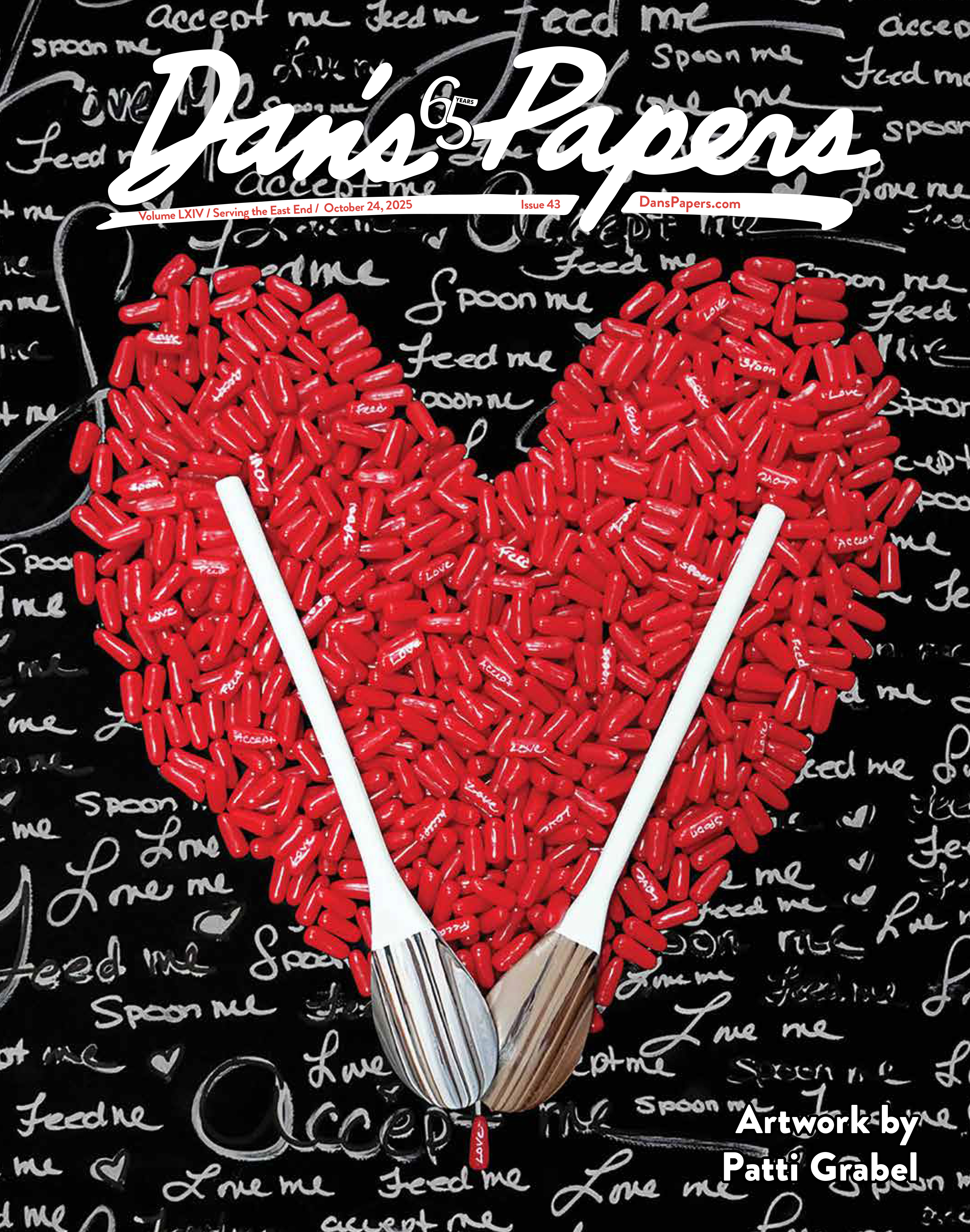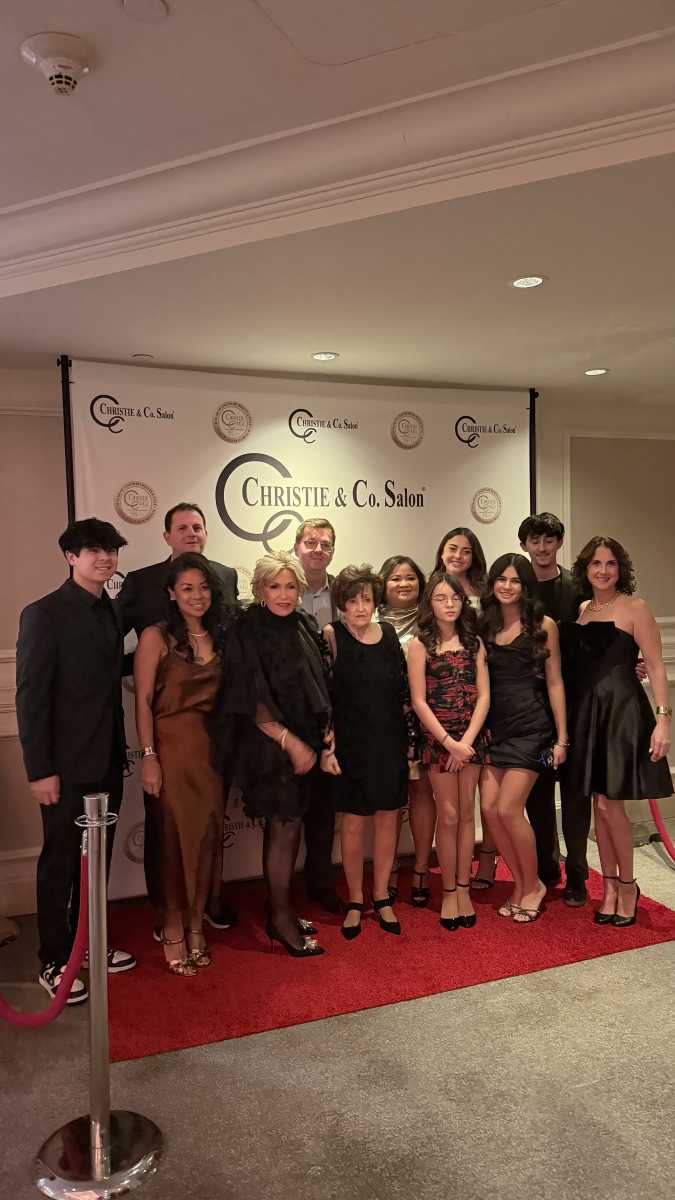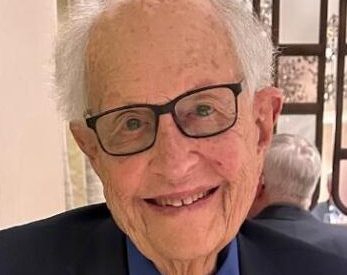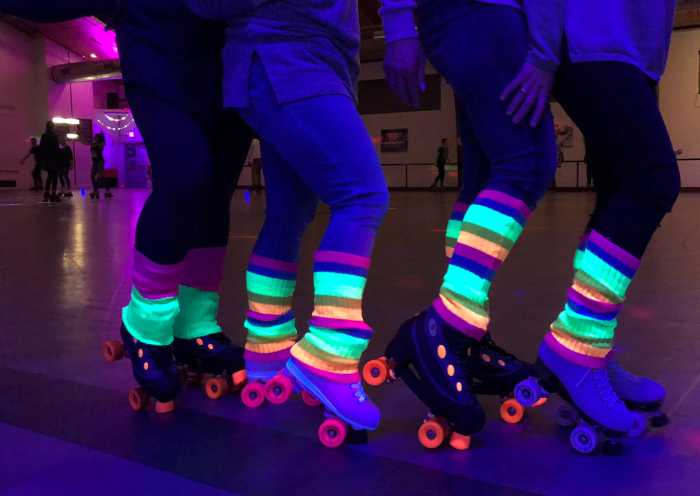Patti Grabel Creates Art with Heaping Spoons Full of Love
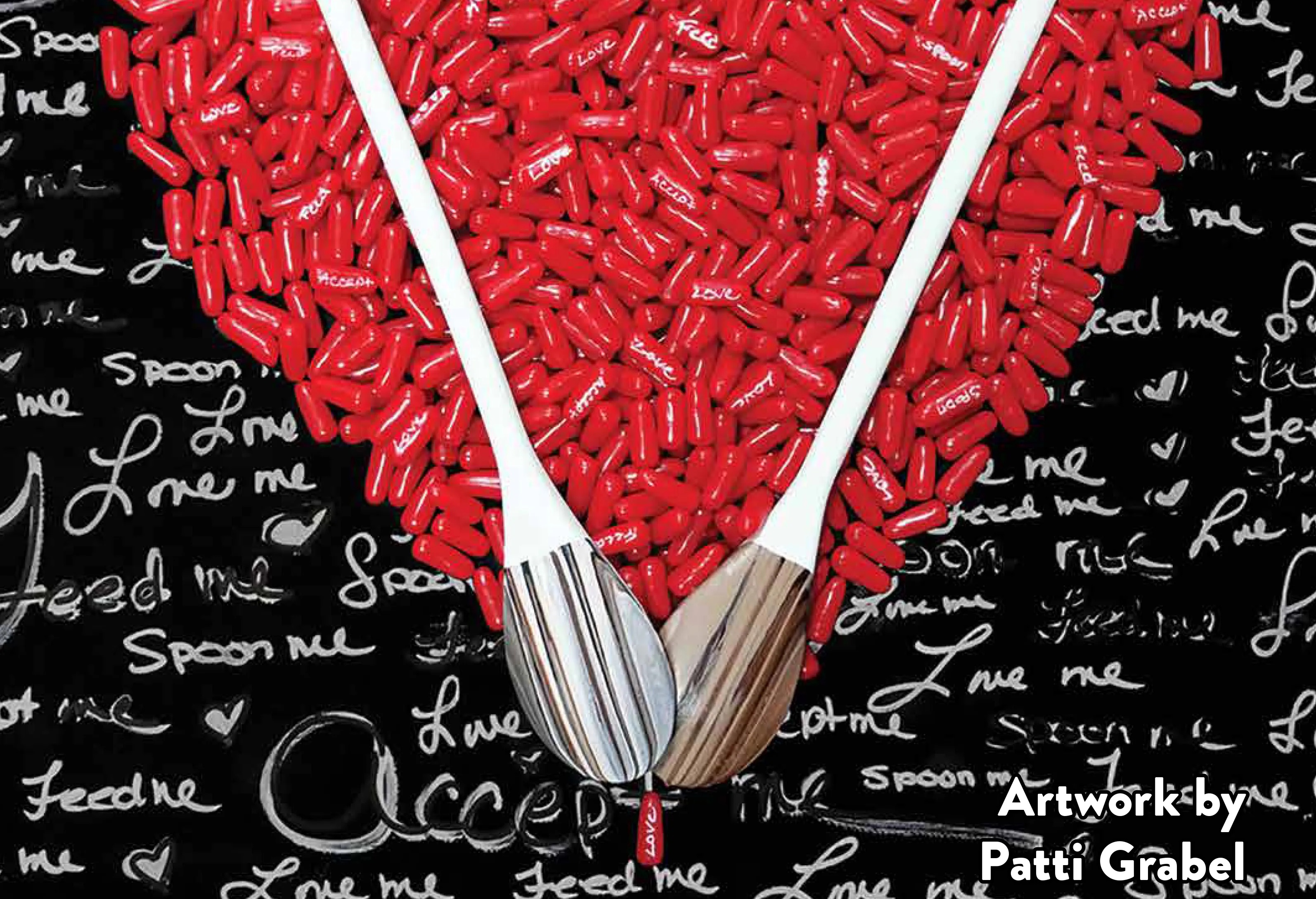
This week, New York and Miami-based artist and writer Patti Grabel discusses “Candy Lovers,” her second Dan’s Papers cover. A longtime Water Mill resident, Grabel features painting, drawing, photography, assemblage and found-object sculpture in her work, creating bold imagery that reveals personal yet universal stories. Since 2015, spoons have been her muse and metaphor, earning her the affectionate title “The Spoon Lady,” and she has used them in initiatives to raise money and awareness for City Harvest and Feeding South Florida, helping hunger via her Spiritual Spoon Project.
Here, Grabel offers more insight into her art, philanthropy, how she’s influenced by the places she’s called home, new projects and, of course, her beautiful relationship with spoons, going back to childhood, and all they represent.
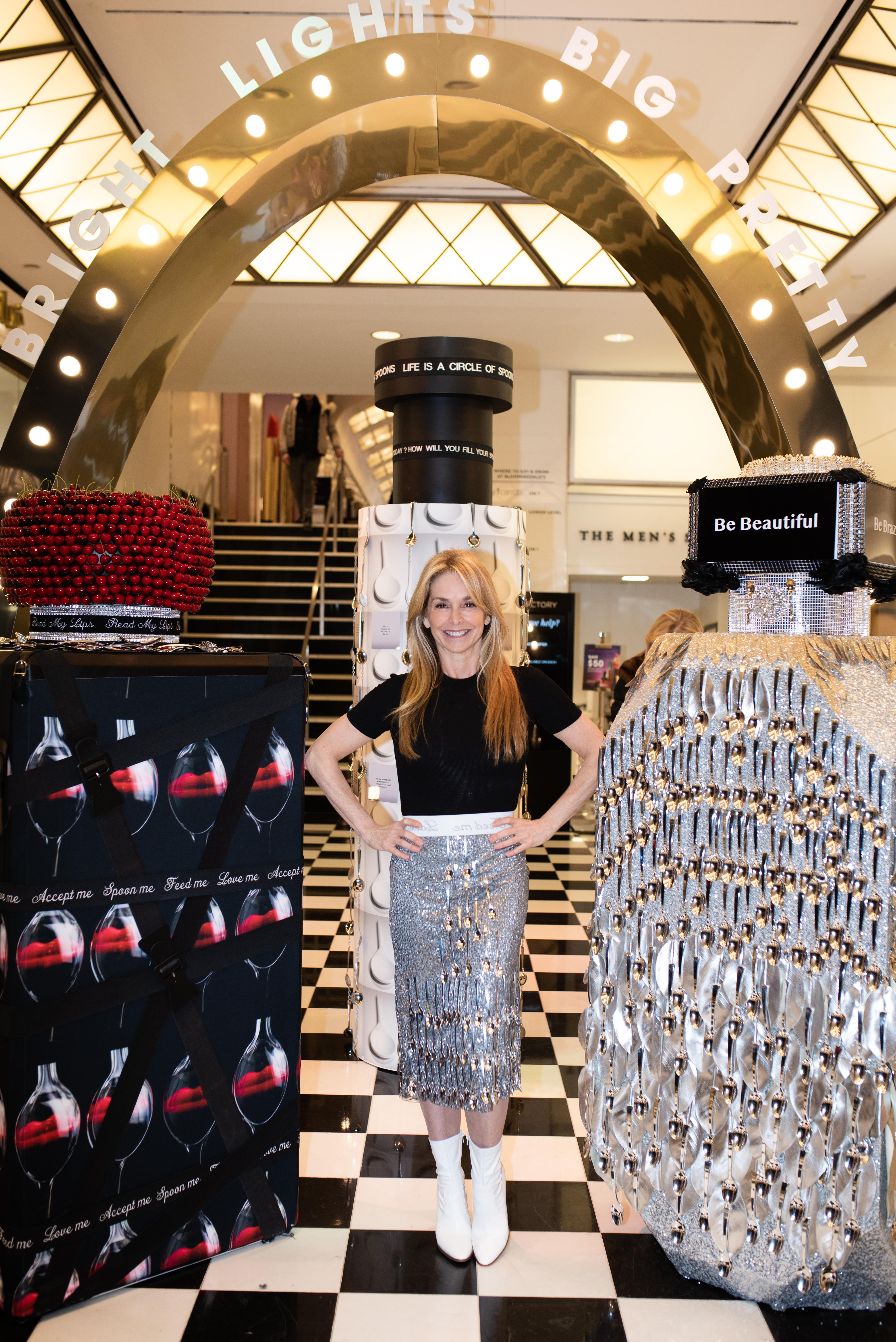
A Conversation with Patti Grabel
Can you explain this cover piece — what are the spoons and Hot Tamales all about?
“Candy Lovers” is a love story told through color and sweetness. I wanted it to be playful and romantic. The two spoons represent lovers resting on a bed of Hot Tamales, one of my favorite childhood candies, from a time when candy was a real treat at the movie theaters. I’ve always loved weaving moments of childhood joy into my work.
The Hot Tamales bring both spice and sweetness, a reminder that love and life are rarely one flavor. I was also inspired by candy hearts and the PEZ dispensers I adored as a kid, those bright little toys that released one candy at a time. The two spoons expel the love candy into the universe.
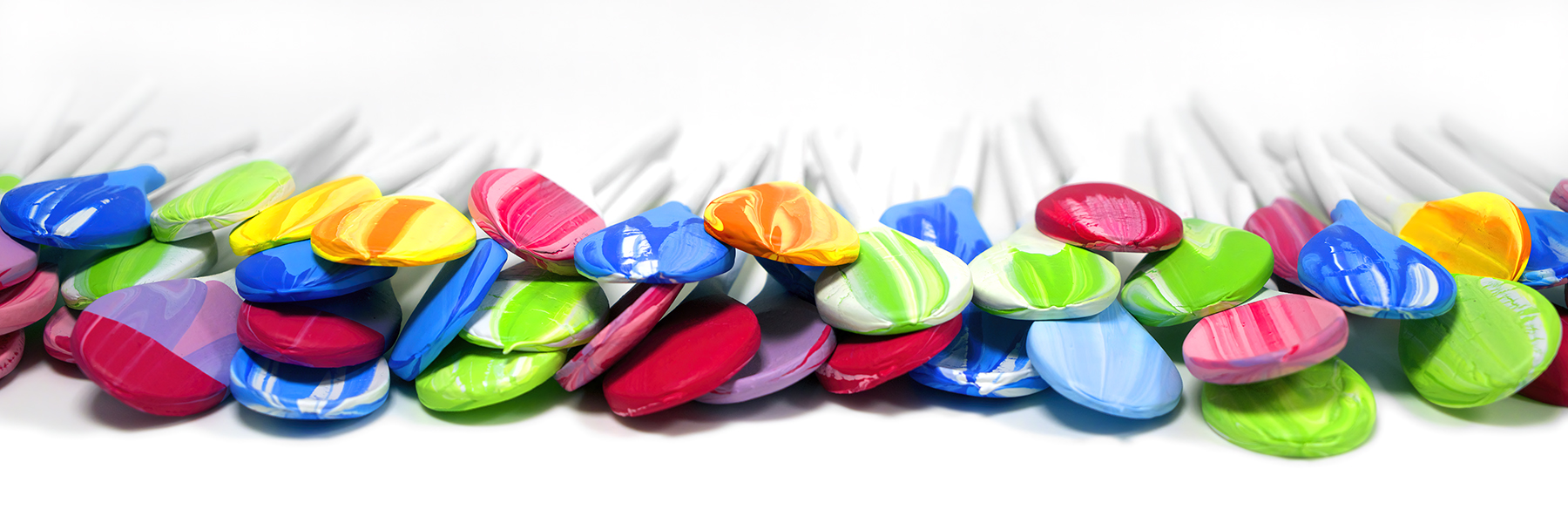
How did you create “Candy Lovers?” You’ve done some interesting things with the painted spoons and the handwritten words on the candy and in the background.
Every spoon begins as a blank canvas. I sand and paint each one white, then dip and swirl it into cans of acrylic paint until I fall in love with what appears. It’s a bit like tie-dye, spontaneous and free.
When they hang to dry, the drips become symbols of emotion: tears, fear, joy, love, and liberation. All real emotions we feel in our lives. I sometimes catch the drips on canvas and transform them into new works.
In “Candy Lovers,” I painted a canvas black as a strong and sensual contrast to the red candies. Using an acrylic pen, I wrote affirmations and quiet thoughts that flowed from my heart. It became a placemat for my spoons and spicy candy, layered with meaning and message. The spoons were dipped in deep chocolate tones and rest on a bed of candy layered with words, which I think of as, “Whispers of affection.” I then photograph the piece. It is printed on archival paper and mounted on plexiglass.
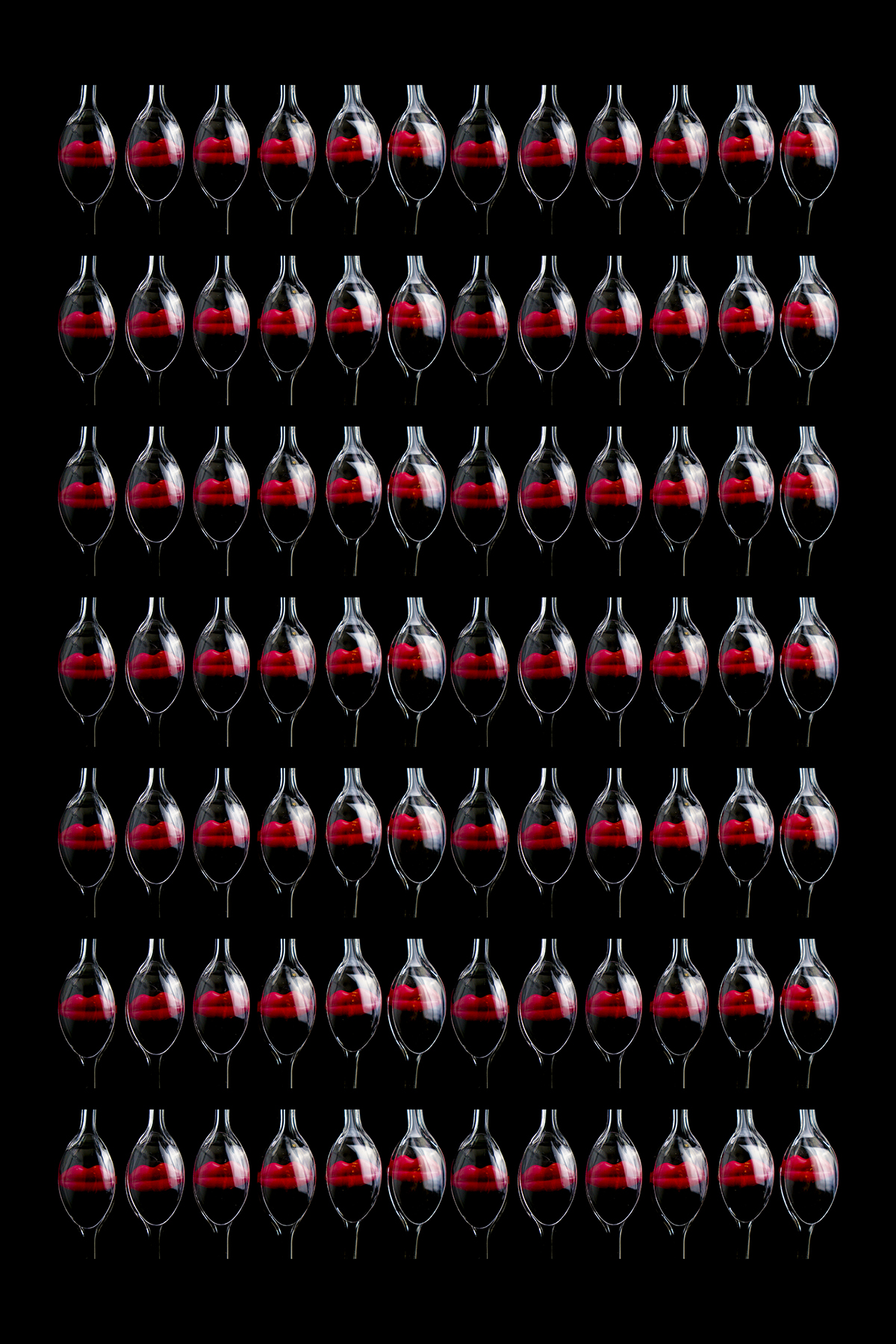
Your spoon imagery has become a signature part of your work and philanthropic efforts. Can you talk about that?
My spoon series began as a personal metaphor for nourishment of body, mind, and soul, and has grown into a movement. My relationship with City Harvest gives my work purpose. Their mission to rescue food and feed New Yorkers in need mirrors my own story, and my Nana’s, from Brooklyn.
As a child, my brother and I visited Nana every weekend. She would collect leftover bread from her neighbors, soak it in milk, sugar, butter, and vanilla, and say, “Hold the spoon with pride and purpose. It’s an extension of yourself.” She taught me how to hold the spoon as we mixed the pudding, a gesture that became part of my artistic practice. Her bread pudding wasn’t just dessert; it was comfort and connection. The next morning, her neighbors lined up at her door and she handed them a slice of life, offering hope and blessings.
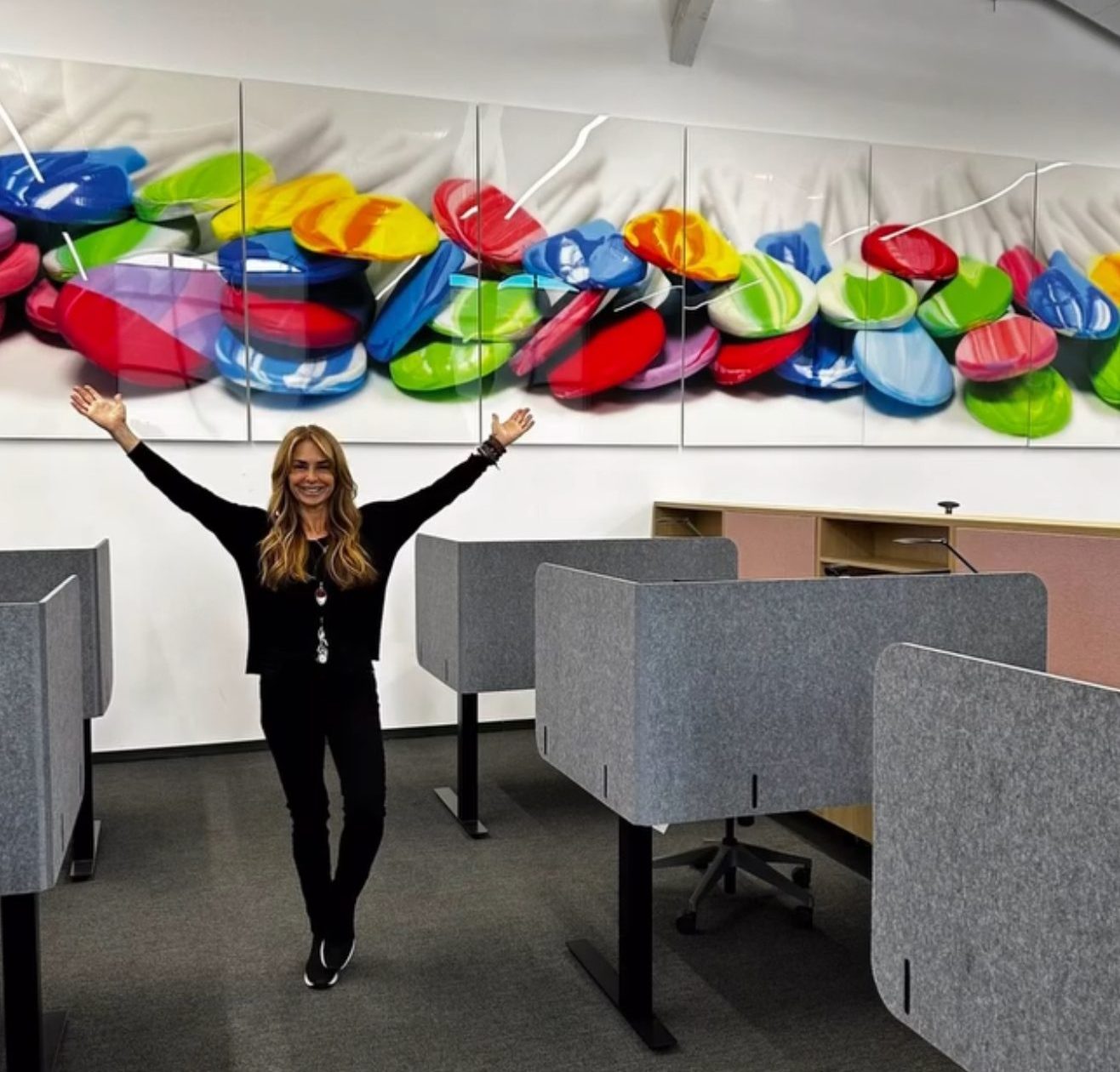
What my Nana began in her Brooklyn kitchen, I carry forward through art.
During the pandemic, I launched a Spoon Drive in the Hamptons, purchasing 10,000 wooden spoons and partnering with dozens of local shops throughout the East End to sell spiritual spoons engraved with words like “love,” “hope,” “peace,” and “joy.” Each spoon represented one family fed for a day through the heroic efforts of City Harvest. Each spoon felt like a piece of bread I collected as a child, which in turn would deliver hope to those in need. Together, we helped feed 11,000 families, a beautiful example of how our community gave and others received through kindness.
A proud moment for me came later, when City Harvest selected me as one of the artists to install a permanent work, “Playtime,” a 27-by-6-foot photographic print of my colorful spoons that mimic lollipops, in their new headquarters in Brooklyn, only a stone’s throw from my Nana’s apartment.
Thank you, Nana, for teaching me the art of giving.
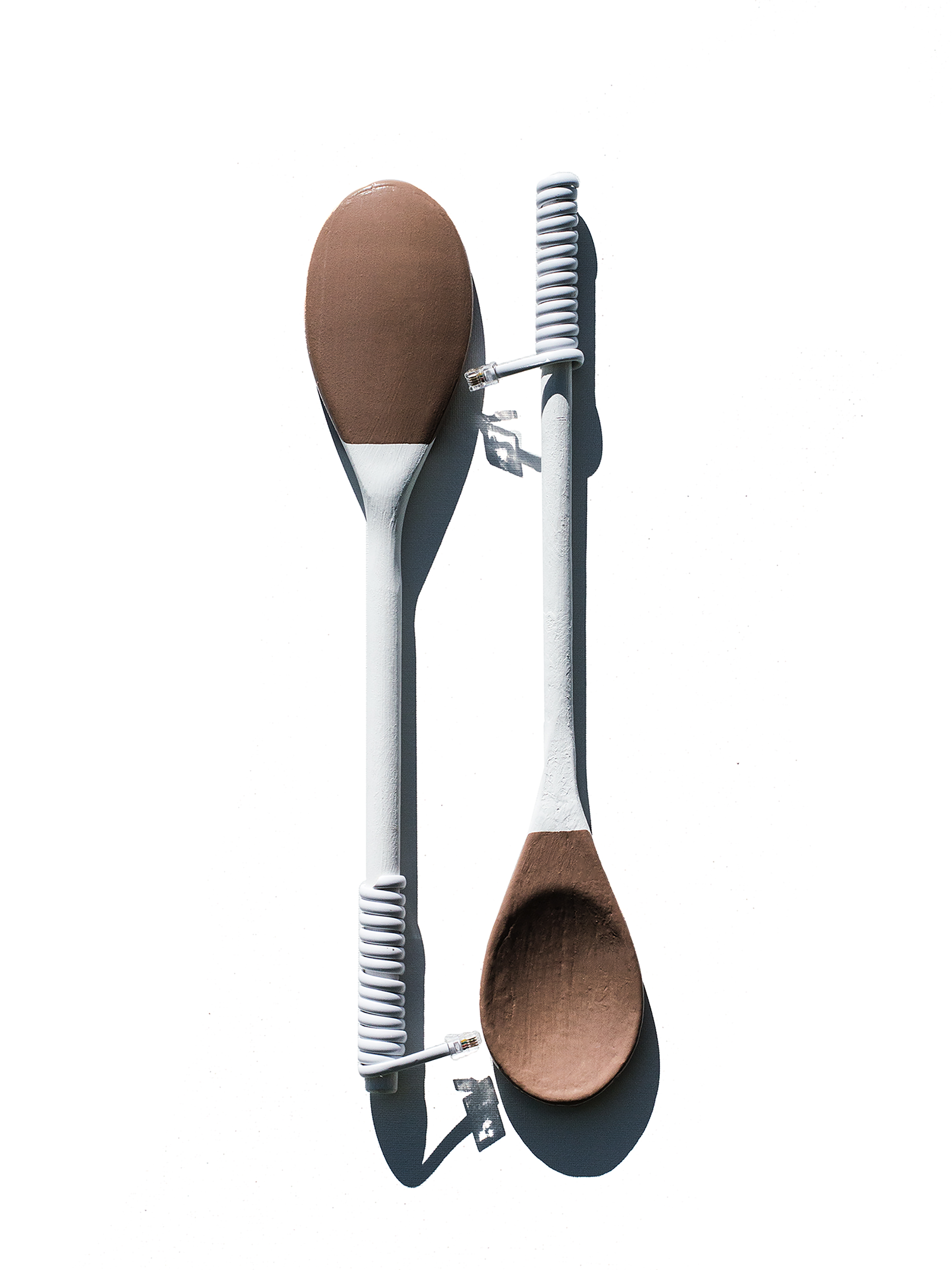
You talk about art and cooking. What is your relationship to cooking? Which came first?
Cooking came first. It was my earliest form of creative expression. My Nana’s kitchen was my first studio; her recipes were my first artistic lessons. I learned that food tells stories, that ingredients hold memory, that feeding others is an act of love.
Painting spoons became a natural extension of that. When I mix pigment, it’s like stirring a recipe for emotion, a way to taste life through color and motion. Both cooking and art require dedication, passion, and commitment to the dish and the canvas. A plate is a blank canvas I love to fill. There truly is an art to plating, and I love creating art in and out of my kitchen. My Clothing Line of Spoons was placed outside my kitchen door, Mother Nature’s oven. The sun bakes them, the wind dries them, and butterflies kiss them. When I take my spoons off the line, I can smell the morning dew hugging the grass on each one. I do not alter them once they are dry. Each one is purposefully unique. I lay them neatly on my studio floor and meditate. They tell me their stories. I tell them mine. We work in unison.
My dream is to install my Clothing Line of Spoons somewhere in the East End to share with our community. Hint!
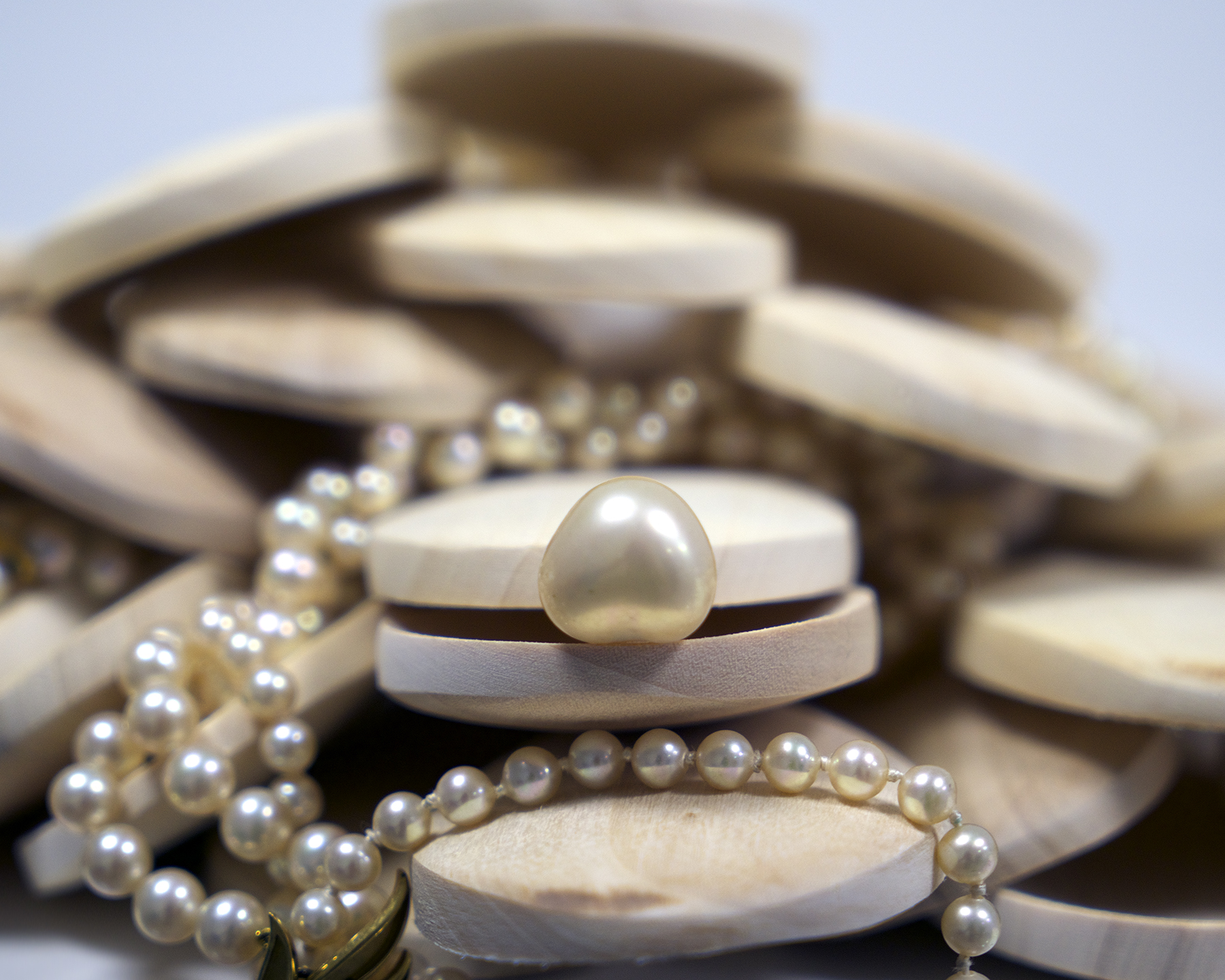
You have ties to the Hamptons and Miami. How do these places inspire your work or process?
The Hamptons’ nature nurtures my soul. The quiet dialogue between the ocean and the sky has inspired many of my photographic prints of Flying Point Beach. I love going to the beach at sunrise, sunset, during, and after a storm. The sand anchors me, and the waves release me.
It’s also home to my neon installation “I Am My Answer” at the Phillips Family Cancer Treatment Center in Southampton. The glowing words are a message of strength and empowerment, a reminder to patients and me that healing begins within. The light reflects out of the hospital, in the hope that those passing by feel the energy it exudes.
Miami welcomed my art with an open mind and heart. I was honored to serve as an Artist in Residence at the Miami Beach JCC, where my solo exhibition “Causing a Stir” celebrated nourishment and community. My work “Playtime” is part of the JCC’s permanent art collection. “Hot Lips” can be seen at Dolma Restaurant, where art, food, and conversation come together like a symphony of musical spoons.
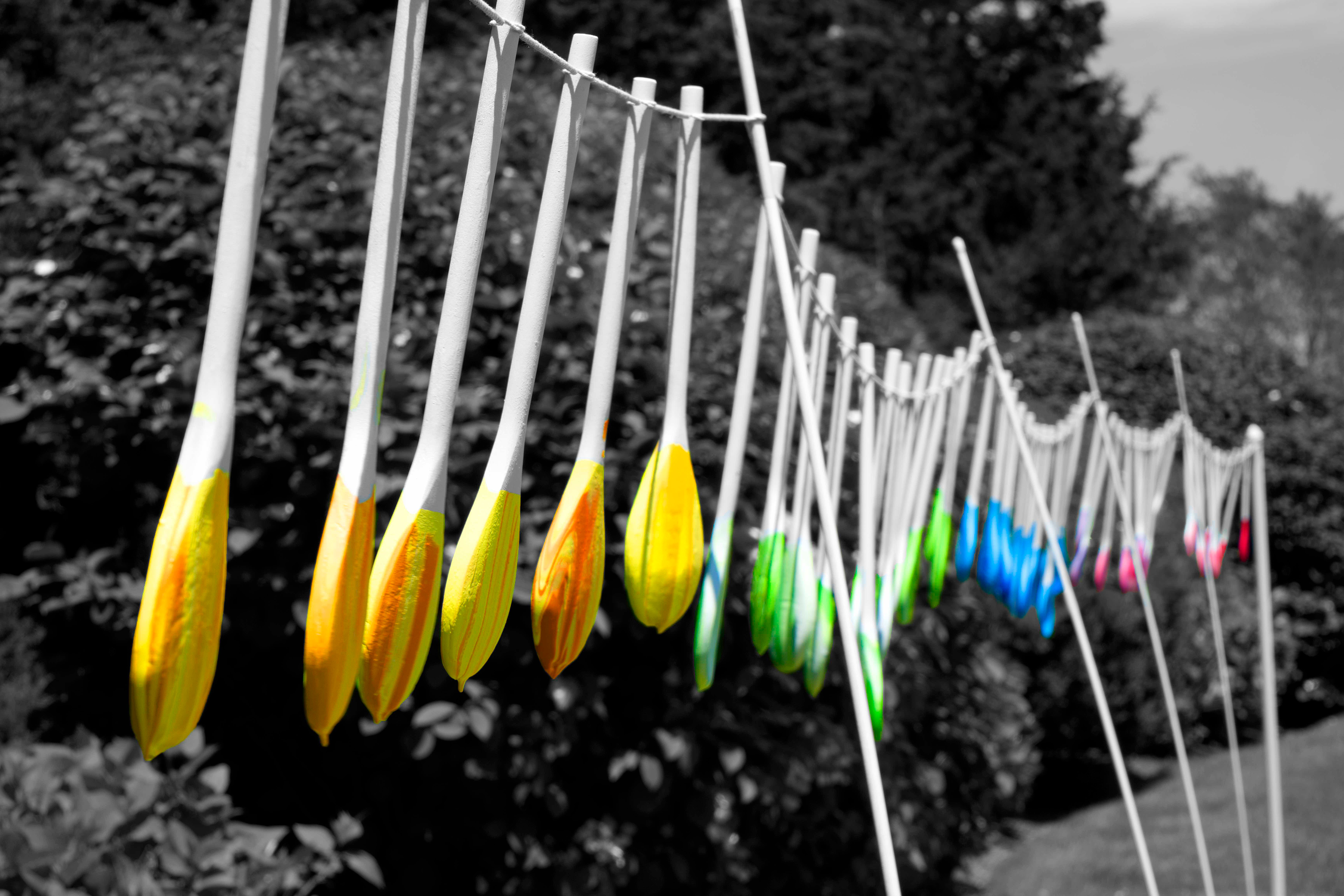
Do you have any new shows or projects in the works?
I’m working on a few new installations for restaurants, creating environments where art and dining come together to nourish both body and soul.
I’m also extremely proud of my upcoming book, In Love with Spoons – A Spiritual Journey for Art Lovers and Food Enthusiasts.
Do you have anything to add?
On the beautiful grounds of LongHouse Reserve, I had the honor of reading my poem “Love Has No Boundaries” alongside artist Oscar Molina, surrounded by his magnificent sculptures Children of the World. It was a moment when art, nature, and history merged. It was a quiet, shared heartbeat of creativity and compassion. The air itself felt alive with connection, reminding me that love truly knows no boundaries.
I’d like to end with a question to you and your readers: How will you fill your spoon today? I fill mine with gratitude for the opportunity to share my story.
Find more work by Patti Grabel and info on her fundraising efforts by visiting patti-grabel.com.
